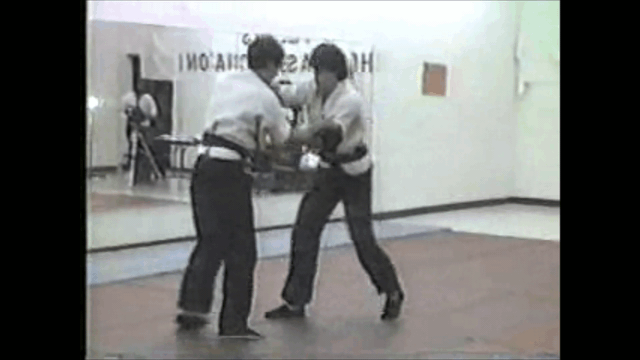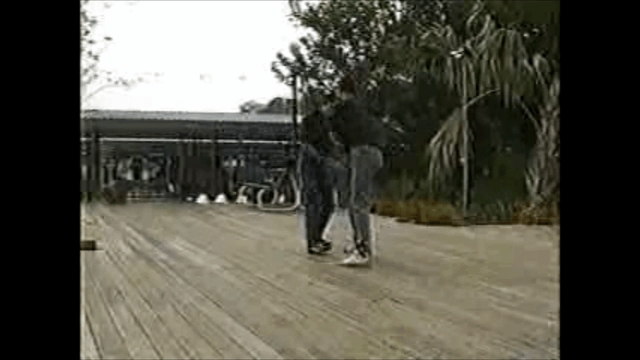dvcochran
Grandmaster
Unless tool box is made out of nylon.Breaking the mould here, what if i use the toolbox itself? that is a sturdy and mighty weapon.
Follow along with the video below to see how to install our site as a web app on your home screen.
Note: This feature may not be available in some browsers.
Unless tool box is made out of nylon.Breaking the mould here, what if i use the toolbox itself? that is a sturdy and mighty weapon.
still i sturdy weapon if it has 50lbs of tools in itUnless tool box is made out of nylon.
Unless tool box is made out of nylon.
Ok, what you are calling principles, I think I might call strategy or tactics, which is coupled with specific technique.Now I can see that we do have different definition of "principle".
Your definition of principle is "Shenfa - body method" such as:
- power generation,
- body coordination,
- waist/hip rotation,
- weight shifting,
- ...
My definition of principle is "find the right key to open the right lock - how to solve a certain problem."
For example, my principle of "sticky drop" is:
- You bear hug me from behind and lock both my arms inside.
- I expand both my arms side way, use a wedge force to loose your bear hug, I then drop down into a low wide horse stance.
The "wedge" concept is the key here. It can be used in many different techniques (such as my rhino guard).
You're going to need several tool boxes and a dolly to carry them all. While there may be more than 40 joint locks, the mechanics of several of them will be the same.I may come up about 40 tools in my joint locking toolbox.
I wish the throwing art can be learned as easy as:if you understand the principle(s) behind a "throw", and ingrain those principles you don't need to learn every different type of throw possible to see that concept/principle utilized.
I can see we also have different definition of "strategy". I can understand that with different definitions, sometime the discussion can be difficult.Ok, what you are calling principles, I think I might call strategy or tactics, which is coupled with specific technique.
In my opinion, principles are applicable to everything in the system, they are what drives the system as a whole. Strategy or tactics are relevant to a particular situation or to a particular type of situation.
It will be real nice that by understanding the principle, one can automatically develop techniques.While there may be more than 40 joint locks, the mechanics of several of them will be the same.
This is why when I includeLike people, there are more similarities between techniques than differences.
Agree with you 100% there!at least learn one strike with your strong hand and then you at least have a fighting chance.
I would call that strategy as well.I can see we also have different definition of "strategy". I can understand that with different definitions, sometime the discussion can be difficult.
My definition of strategy is the same as "game plan" such as:
- Use a groin kick to set up a face punch.
- Use same direction attack (E -> E).
- Use opposite direction attack (E -> W).
- Use linear attack, when your opponent resists, change into circular attack.
- Attack your opponent's back leg if you can, otherwise, attack his leading leg, when he steps back, you then attack his back leg.
- ...
So your definition of strategy include how to useI would call that strategy as well.
The principles are what make new tricks/techniques easy to learn, help you adapt to new situations, provide the basis for tactics, etc. I think most folks are taught a range of principles, though they may never actually use that language.but you dont need principles, you need '' tricks'' that work
if a trick is dependent on a principle, then it wont work unless you apply the principle,
but what principle do you need to clamp someones head ?
I would say that wedge “concept” fits my definition of “principle”, too.Now I can see that we do have different definition of "principle".
Your definition of principle is "Shenfa - body method" such as:
- power generation,
- body coordination,
- waist/hip rotation,
- weight shifting,
- ...
My definition of principle is "find the right key to open the right lock - how to solve a certain problem."
For example, my principle of "sticky drop" is:
- You bear hug me from behind and lock both my arms inside.
- I expand both my arms side way, use a wedge force to loose your bear hug, I then drop down into a low wide horse stance.
The "wedge" concept is the key here. It can be used in many different techniques (such as my rhino guard).
I don’t consider 1 physics, but I would put both of these with strategy. You are describing an approach to dealing with a particular type of confrontation.So your definition of strategy include how to use
1. simple physics to solve a MA problem (such as use a kick to counter a punch).
2. plan to solve a MA problem (such as to use a pull to set up a push).
I prefer to call 1 as principle (find the right key to open the right lock), and 2 as strategy (a cheating game - plan ahead).
I would say that wedge “concept” fits my definition of “principle”, too.
Here is my concern. Every MA system hasthe way I see principles are what drives the functionality of the system as a whole.
I actually think it can. It just takes a while to teach the body to move and the mind to use those principles.I wish the throwing art can be learned as easy as:
Principle - push your opponent's head down, and sweep/hook his leg up.
Most of that is semantics. I talk about principles at multiple levels. “Aiki” is a high level, conceptual principle. Breaking structure before attempting to throw is a lower level principle.Here is my concern. Every MA system has
- power generation,
- body coordination,
- waist/hip rotation,
- weight shifting,
- ...
To me, those are the basic "building blocks" for that MA system and not "principles" for that MA system.
For example, the
- Taiji principles are ward off, pull back, press forward, push, ...
- Preying mantis principles are 8 hard and 12 soft (clinch, pluck, connect, hang, ... ).
- Long fist principles are dodge, spin, jump in, hop back, ...
- ...
Those all have nothing to do with power generation, body coordination, ...
How?I actually think it can. It just takes a while to teach the body to move and the mind to use those principles.


